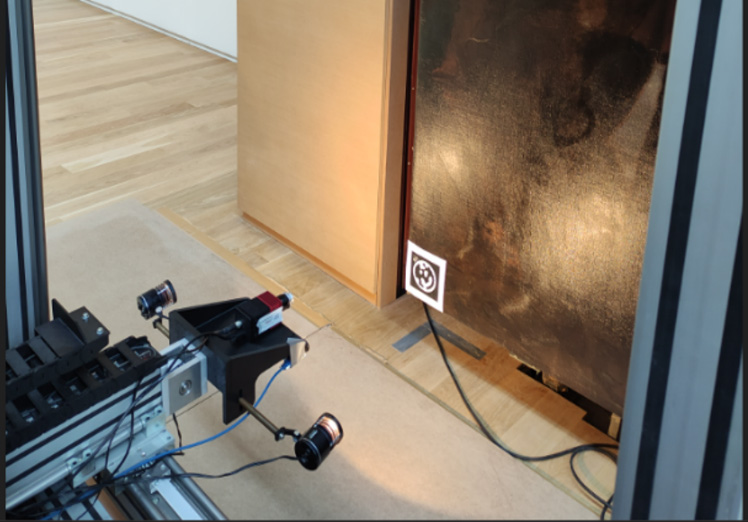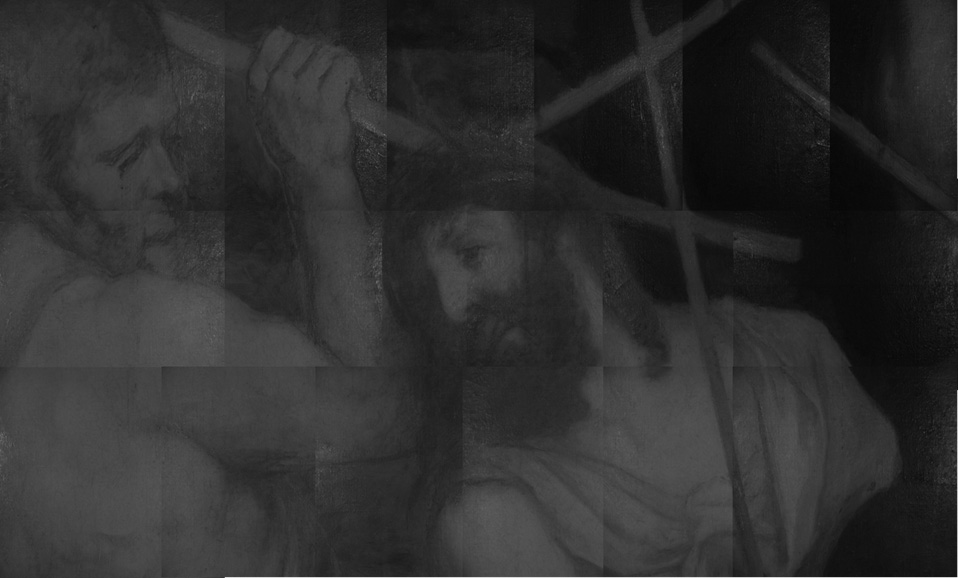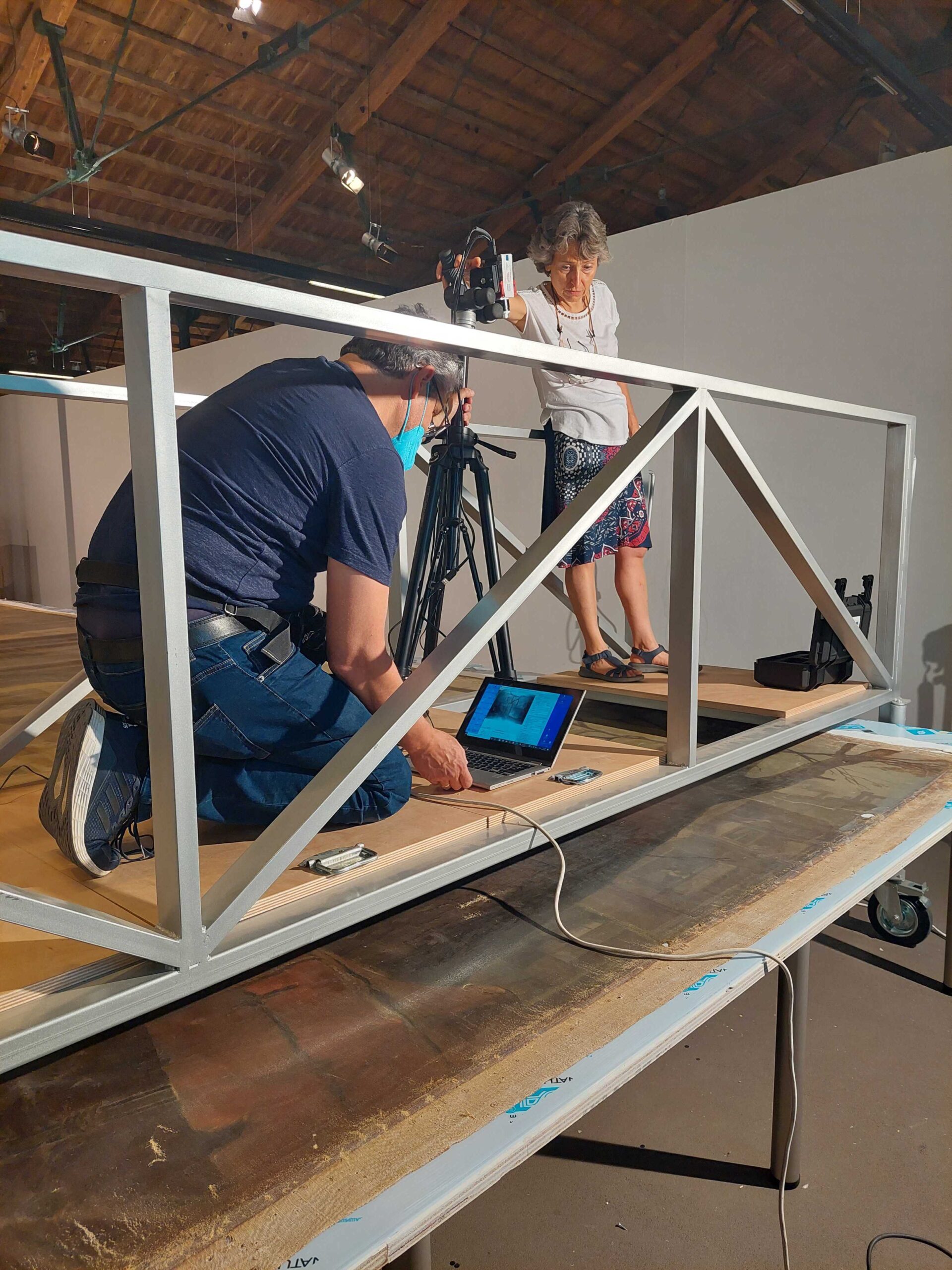Short Wavelength InfraRed (SWIR) is based on the principle that with the increase of the wavelength the depth of penetration of the radiation into the material increases, the use of radiation in the Short Wavelength InfraRed (SWIR) i.e. in the range of 1.000-2.500nm allows the penetration of layers deeper than the surface (varnish, paint layer) enabling the study of these layers.
In paintings, this technique is used to study the sketches created by artists before applying the painting layer to their works. This can provide valuable information about the technique of construction of a painting, the artist’s style and can also contribute to the study of the authenticity of the painting.
The possibility of detecting the draft is based on the fact that the infrared radiation penetrates the painting layer and is reflected back when it meets the preparation layer, which is usually a white and therefore highly reflective surface. However, at the points where the material used to create the preparation is located, there is strong absorption which creates a sharp contrast between areas with a preparation and areas without one.
By using a suitable camera sensitive to SWIR, a complete recording of the sketch is achieved while the combined use of filters which limits the spectral range increases the sharpness depending on the materials present in the painting. A prerequisite is the use of light sources that emit in the SWIR.
Features
● Illumination of the area of interest with a source radiating in the SWIR (1,000-2,000nm).
● Infrared radiation penetrates varnish and pigments, backscattered by the preparation layer, absorbed by lead or charcoal.
● Collection of the backscattered radiation (diffuse reflection) via image.
● Detection of preforms through contrast in the image.
Application
It is applied to:
● Tables.
● Pictures-Cigraphs.
Infrared radiation has the ability to penetrate the painting layers and backscatter from the lower layers, such as the preparation. The transmittance increases with increasing wavelength. If there is a preparation with a material that strongly absorbs infrared radiation, such as pencil or charcoal, then there is no backscattered radiation at these points, which creates a contrast between the areas of strong and low backscatter, resulting in the detection of the preparations.





